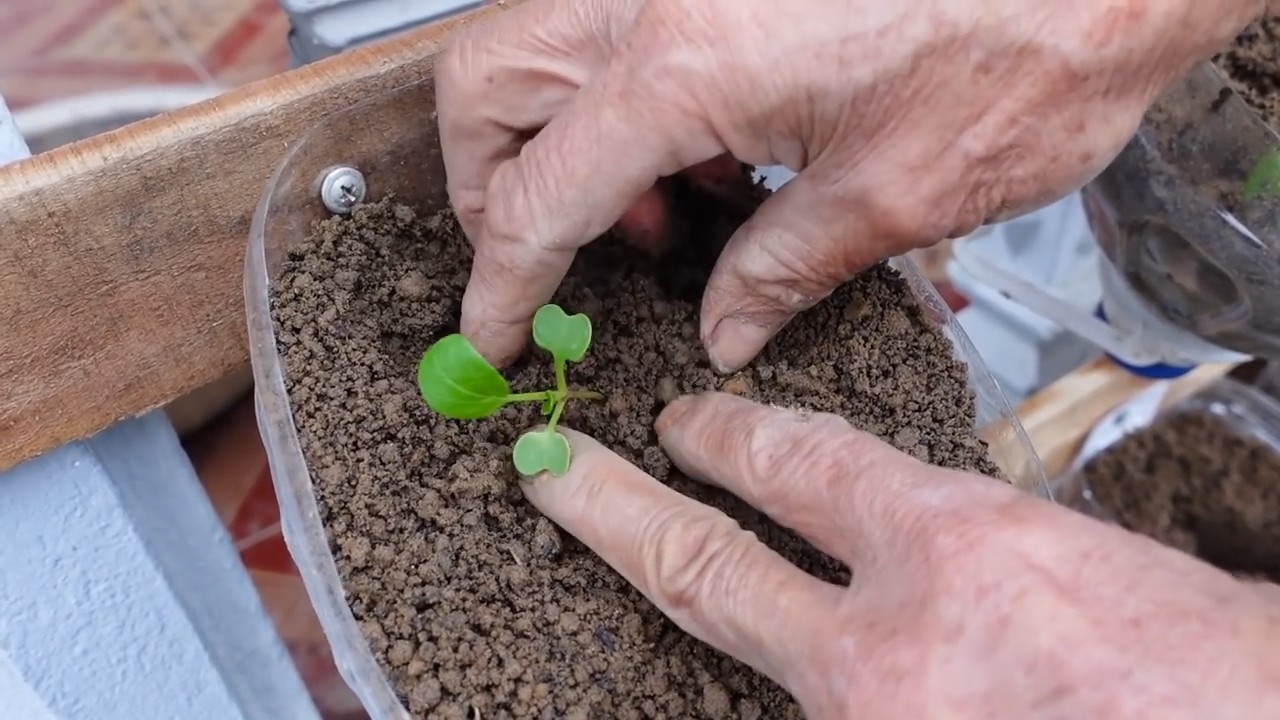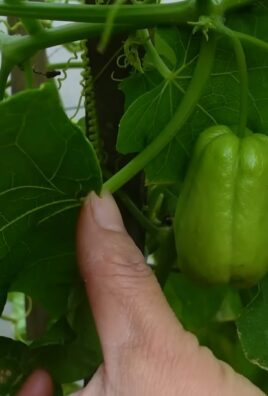Rooftop Bok Choy Gardening: Imagine stepping onto your rooftop and harvesting fresh, crisp Bok Choy, ready to add a vibrant touch to your next stir-fry. Sounds like a dream? It doesn’t have to be! This DIY guide unlocks the secrets to successfully growing this nutritious and delicious leafy green right in the heart of your urban jungle.
For centuries, Bok Choy has been a staple in Asian cuisine, revered not only for its mild, slightly sweet flavor but also for its impressive health benefits. From ancient Chinese gardens to modern-day kitchens, this versatile vegetable has nourished generations. But you don’t need acres of land to enjoy its goodness.
In today’s world, where access to fresh, locally sourced produce can be a challenge, rooftop Bok Choy gardening offers a fantastic solution. It’s a way to reconnect with nature, reduce your carbon footprint, and enjoy the satisfaction of growing your own food. Plus, let’s be honest, who wouldn’t want to impress their friends and family with their green thumb skills? This article will provide you with easy-to-follow steps, clever hacks, and essential tips to transform your rooftop into a thriving Bok Choy haven. Get ready to cultivate your own little piece of edible paradise!

Your Own Rooftop Bok Choy Garden: A Step-by-Step Guide
Hey garden friends! Have you ever thought about growing your own bok choy on the rooftop? It’s easier than you think and brings fresh vegetables right to your doorstep. I’ll show you how you can easily do it yourself!
What You Need: The Materials List
Before we get started, here is a list of everything you’ll need for your rooftop garden:
- Bok Choy Seeds: Choose a variety that you like. There are different sizes and colors available.
- Planters: Make sure they are large enough for bok choy (at least 20 cm deep and wide). Pots, planter boxes, or even old buckets work great.
- High-Quality Potting Mix: A good mixture of garden soil, compost, and perlite provides the right drainage and nutrients.
- Drainage Material: Gravel, clay shards, or expanded clay for the bottom of the planters.
- Watering Can or Hose: To water your plants.
- Garden Trowel or Scoop: For filling the planters.
- Gardening Gloves: To protect your hands.
- (Optional) Fertilizer: Organic fertilizer or compost tea to promote growth.
- (Optional) Slug Protection: If you live in an area with many slugs.
- (Optional) Windbreak: If your rooftop is very windy.
Preparation is Everything: The Right Location
Bok choy loves sun, but not too much heat. A location with at least 4-6 hours of sunlight per day is ideal. Make sure your roof is stable enough to support the weight of the planters. Also, check if you need a permit for a rooftop garden.
Step-by-Step Guide: How to Plant Your Bok Choy
- Lay the Drainage: Start by adding a layer of drainage material (gravel, clay shards, or expanded clay) to the bottom of your planters. This prevents waterlogging and ensures good drainage.
- Fill with Soil: Fill the planters with high-quality potting mix. Leave about 2-3 cm of space to the rim.
- Sow the Seeds: Sprinkle the bok choy seeds evenly on the soil. Then cover them with a thin layer of soil (approx. 0.5 cm).
- Water Them In: Gently water the soil so that it is moist but not wet. Use a watering can with a rose attachment to avoid washing the seeds away.
- Choose the Location: Place the planters in a sunny spot on your roof.
- Maintain Moisture: Keep the soil moist, but not wet. Water regularly, especially on hot days.
- Thinning Out: Once the seedlings are a few centimeters tall, you need to thin them out. Remove the weakest plants so that the remaining plants have enough space to grow (approx. 10-15 cm apart).
- Fertilizing (optional): If you wish, you can regularly fertilize your bok choy plants with organic fertilizer or compost tea. This promotes growth and the harvest.
- Protective Measures (optional): Protect your plants from slugs and strong winds. You can use slug pellets or set up a windbreak.
Easy Care: How to Keep Your Bok Choy Healthy
- Watering: Bok choy needs regular watering, especially during dry periods. Make sure the soil is always moist, but avoid waterlogging.
- Fertilizing: Fertilize your plants every few weeks with organic fertilizer or compost tea.
- Weeding: Regularly remove weeds that grow around your bok choy plants.
- Pests and Diseases: Watch out for pests like aphids or cabbage whites. If necessary, you can use organic pesticides. Bok choy can also be affected by fungal diseases. Ensure good ventilation and avoid waterlogging to prevent diseases.
Harvest Time: When is the Bok Choy Ready?
Bok choy is typically ready for harvest 4-6 weeks after sowing. You can harvest the leaves individually or cut the whole plant. It’s best to harvest in the morning when the leaves are still fresh and crisp.
Extra Tips for Your Rooftop Garden
- Windbreak: It can be very windy on a rooftop. A windbreak made of wood or plexiglass protects your plants from damage.
- Irrigation System: If you have little time, you can install an automatic irrigation system.
- Sun Protection: On very hot days, a shade cloth can protect your plants from sunburn.
- Companion Planting: Bok choy combines well with other vegetables like radishes, lettuce, or carrots.
- Observation: Observe your plants regularly to identify and fix problems early.
Common Problems and Solutions
- Yellow Leaves: Can be a sign of nutrient deficiency or overwatering. Fertilize your plants or reduce watering.
- Holes in the Leaves: Can be caused by pests like slugs or caterpillars. Use slug pellets or pick off the pests by hand.
- Wilting Leaves: Can be a sign of lack of water or root rot. Water your plants or improve the drainage.
Bok Choy in the Kitchen: Delicious Recipe Ideas
Bok choy is versatile and can be eaten raw or cooked. Here are a few recipe ideas:
- Bok Choy Salad: Cut bok choy into fine strips and mix it with other salad ingredients like carrots, cucumbers, and peppers.
- Bok Choy Stir-fry: Sauté bok choy with garlic, ginger, and soy sauce in a pan.
- Bok Choy Soup: Add bok choy to your favorite soup.
- Steamed Bok Choy: Steam bok choy with a little water and garlic.
Seasonal Adjustments
- Spring/Summer: In these seasons, it is important to ensure adequate watering as the sun can be strong. A shade cloth can help protect the plants from burns.
- Autumn: It can get cooler in the fall. Protect your plants from frost by covering them with fleece.
- Winter: Bok choy is relatively cold-resistant, but during very severe frosts, you should bring the plants indoors or cover them with fleece.
Sustainability in the Rooftop Garden
- Composting: Use kitchen scraps and garden waste to make your own compost. This saves money and is good for the environment.
- Rainwater Harvesting: Collect rainwater in a rain barrel and use it to water your plants.
- Organic Gardening: Do not use chemical fertilizers or pesticides. Instead, rely on natural methods.
Conclusion: Your Own Bok Choy Garden is Possible!
With a little planning and effort, you can create your own bok choy garden on the rooftop and harvest fresh, healthy vegetables. It’s a great feeling to know where your food comes from and to have grown it yourself. So, what are you waiting for? Get started and transform your rooftop into a green oasis! Happy gardening

Conclusion
So, there you have it! Transforming your rooftop into a thriving bok choy garden is not only achievable, but incredibly rewarding. We’ve walked you through the simple steps, highlighting the ease and accessibility of this DIY project. Forget expensive grocery store produce – imagine stepping onto your own rooftop oasis and harvesting fresh, crisp bok choy whenever you need it.
This isn’t just about growing vegetables; it’s about embracing a sustainable lifestyle, connecting with nature, and enjoying the unparalleled flavor of homegrown goodness. The satisfaction of nurturing a plant from seed to harvest is a feeling that’s hard to beat. Plus, you’ll be reducing your carbon footprint and contributing to a greener environment, one delicious bok choy at a time.
The beauty of rooftop bok choy gardening lies in its adaptability. Feel free to experiment with different varieties of bok choy, from the classic green to the vibrant purple cultivars. Consider companion planting with herbs like cilantro or dill to enhance flavor and attract beneficial insects. You can also adjust the container size and spacing to suit your available rooftop space.
Don’t be afraid to get creative with your container choices. Repurposed buckets, old tires (properly cleaned, of course!), or even DIY wooden planters can add a unique touch to your rooftop garden. Just ensure they have adequate drainage to prevent waterlogging.
Rooftop bok choy gardening is more than just a trend; it’s a practical and enjoyable way to bring fresh, healthy food to your table. It’s a chance to learn, experiment, and connect with the natural world in a meaningful way.
We urge you to take the plunge and give this DIY trick a try. The initial setup is minimal, and the rewards are immense. Imagine the delicious stir-fries, soups, and salads you can create with your own homegrown bok choy.
But don’t just take our word for it. We want to hear about your experiences! Share your photos, tips, and challenges in the comments below. Let’s build a community of rooftop bok choy enthusiasts and inspire others to embrace this rewarding and sustainable practice. What bok choy varieties did you try? What challenges did you face, and how did you overcome them? Your insights could be invaluable to other aspiring rooftop gardeners.
So, grab your seeds, prepare your containers, and get ready to transform your rooftop into a flourishing bok choy paradise. Happy gardening!
Frequently Asked Questions (FAQ)
What if I don’t have a rooftop? Can I still grow bok choy in containers?
Absolutely! While this article focuses on rooftop gardening, the principles apply equally well to balconies, patios, or even sunny windowsills. The key is to ensure your containers receive at least 4-6 hours of direct sunlight per day. If you’re growing indoors, consider using grow lights to supplement natural sunlight. The size of the container will depend on the variety of bok choy you choose, but generally, a container that is at least 6-8 inches deep and wide is sufficient for a single plant. Remember to choose a container with drainage holes to prevent waterlogging.
How often should I water my rooftop bok choy?
Watering frequency depends on several factors, including the weather, the type of container you’re using, and the soil composition. As a general rule, water deeply whenever the top inch of soil feels dry to the touch. During hot, sunny weather, you may need to water daily, or even twice a day. In cooler, cloudier weather, you may only need to water every few days. Avoid overwatering, as this can lead to root rot. A good way to check if your bok choy needs water is to stick your finger into the soil. If it feels dry, it’s time to water.
What kind of soil is best for rooftop bok choy gardening?
Bok choy thrives in well-draining, nutrient-rich soil. A good potting mix specifically formulated for vegetables is ideal. You can also create your own mix by combining equal parts of compost, peat moss (or coconut coir), and perlite or vermiculite. Compost provides essential nutrients, peat moss (or coconut coir) helps retain moisture, and perlite or vermiculite improves drainage. Avoid using garden soil in containers, as it can become compacted and poorly drained.
How do I protect my rooftop bok choy from pests and diseases?
Regularly inspect your plants for signs of pests or diseases. Common pests that affect bok choy include aphids, cabbage worms, and flea beetles. You can control these pests with organic methods such as handpicking, insecticidal soap, or neem oil. To prevent diseases, ensure good air circulation around your plants and avoid overwatering. If you notice any signs of disease, such as yellowing leaves or spots, remove the affected leaves immediately. Crop rotation can also help prevent soilborne diseases.
When is the best time to harvest my rooftop bok choy?
Bok choy is typically ready to harvest 45-60 days after planting. You can harvest the entire plant at once, or you can harvest individual leaves as needed. To harvest the entire plant, simply cut it off at the base with a sharp knife. To harvest individual leaves, start with the outer leaves and work your way inwards. Harvesting individual leaves allows the plant to continue producing new leaves for a longer period. The best time to harvest is in the morning, when the leaves are crisp and fresh.
Can I grow bok choy in the winter on my rooftop?
Bok choy is a cool-season crop and can tolerate light frost. In mild winter climates, you may be able to grow bok choy outdoors throughout the winter. However, in colder climates, you will need to provide some protection from the cold. You can use row covers, cold frames, or a greenhouse to extend the growing season. Choose a variety of bok choy that is known to be cold-hardy. Even with protection, growth will be slower in the winter months.
How do I fertilize my rooftop bok choy?
Bok choy is a heavy feeder and benefits from regular fertilization. Use a balanced organic fertilizer, such as a 5-5-5 or 10-10-10, according to the package directions. You can also use compost tea or fish emulsion as a liquid fertilizer. Fertilize every 2-3 weeks during the growing season. Avoid over-fertilizing, as this can lead to excessive leaf growth and reduced flavor.
What are some good companion plants for bok choy?
Companion planting can help improve the health and yield of your bok choy. Good companion plants for bok choy include:
* **Aromatic herbs:** Dill, cilantro, mint, and rosemary can help repel pests.
* **Alliums:** Garlic and onions can also deter pests and improve soil health.
* **Legumes:** Peas and beans can fix nitrogen in the soil, which benefits bok choy.
* **Marigolds:** Marigolds attract beneficial insects and repel nematodes.
Avoid planting bok choy near other members of the brassica family, such as cabbage, broccoli, and cauliflower, as they can attract the same pests and diseases.
How much sunlight does rooftop bok choy need?
Bok choy thrives in full sun, which means at least 6 hours of direct sunlight per day. However, it can also tolerate partial shade, especially in hot climates. If your rooftop is very sunny, you may need to provide some shade during the hottest part of the day to prevent the leaves from scorching.
What if my bok choy bolts (goes to seed)?
Bolting occurs when bok choy is exposed to stress, such as high temperatures or drought. Once bok choy bolts, the leaves become bitter and less palatable. To prevent bolting, choose bolt-resistant varieties, provide adequate water, and protect your plants from extreme heat. If your bok choy does bolt, you can still harvest the seed pods and use them in stir-fries or soups.




Leave a Comment